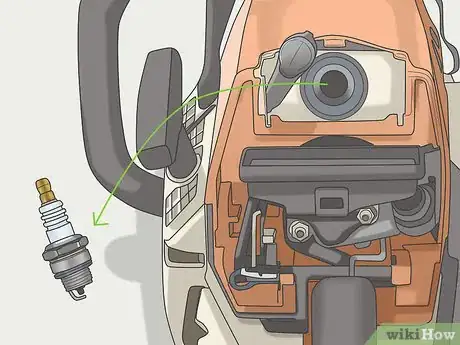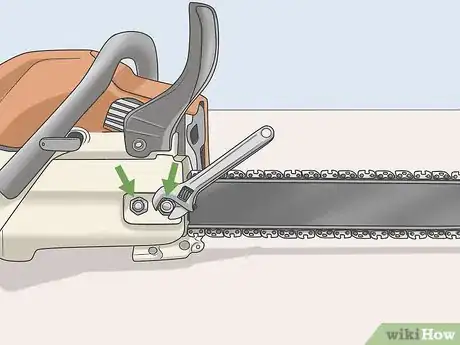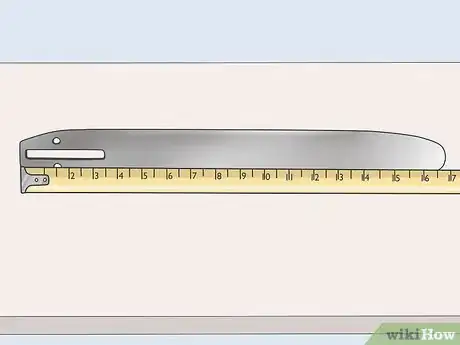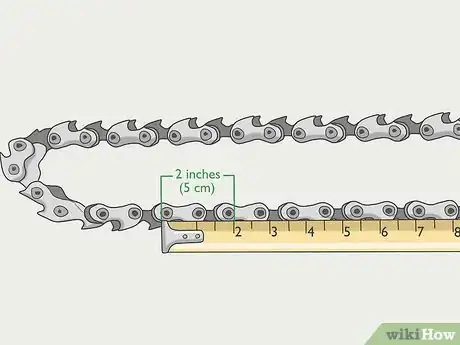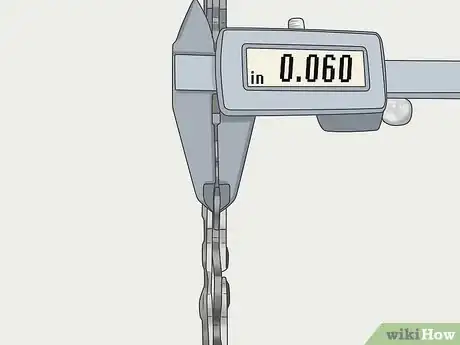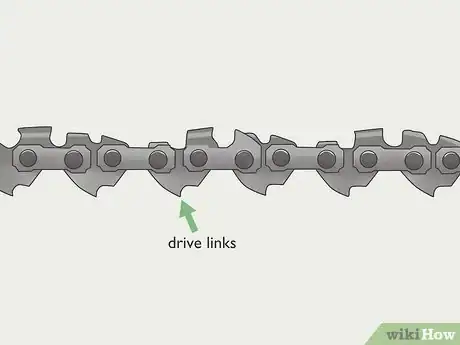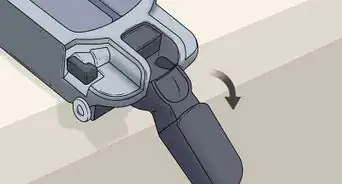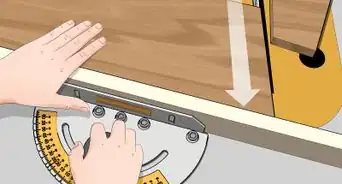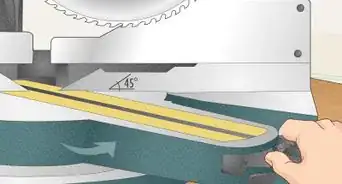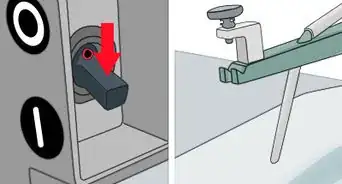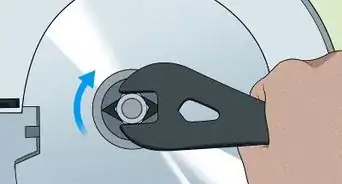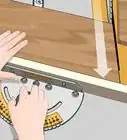This article was co-authored by wikiHow staff writer, Hunter Rising. Hunter Rising is a wikiHow Staff Writer based in Los Angeles. He has more than three years of experience writing for and working with wikiHow. Hunter holds a BFA in Entertainment Design from the University of Wisconsin - Stout and a Minor in English Writing.
This article has been viewed 48,837 times.
Learn more...
The bar on a chainsaw is the metal part that extends out from the body that the chain wraps around. If you need to determine the size of your chainsaw bar so you can get a replacement, there are easy ways to measure the length. Many measurements refer to either the cutting length, which is how far the bar sticks out, or the true length, which is the full size of the bar. If you're getting a new bar for your chainsaw, you may also need to measure the chain so you know what size you need.
Steps
Finding the Cutting and True Bar Lengths
-
1Unplug the spark plug wire so the chainsaw doesn't start. Set your chainsaw down on a flat surface so the handle is face up. Locate the screws or bolts holding the top cover on the chainsaw's body and use either a screwdriver or wrench to loosen them. Look for a black wire plugging into a circular port under the cover, and pull the wire out of the port to disconnect power from the spark plug.[1]
- Don't measure the bar length while the spark plug wire is still attached to prevent the saw from starting while you're working on it.
- The location of the screws or bolts may vary depending on the chainsaw model you have.
-
2Measure from the tip of the bar to where it enters the body for the cutting length. Start the end of a tape measure where the bar goes inside the main chainsaw body. Extend the tape until you reach the tip of the bar and record your measurement. Round the measurement to the nearest inch to know the cutting length of your bar.
- For example, if the measurement you took is 13 5⁄8 inches (35 cm), then the cutting length is 14 inches (36 cm).
- The cutting length may also be referred to as the called length, usable length, or effective length.
- The average cutting lengths on most chainsaws are 14 inches (36 cm), 16 inches (41 cm), 18 inches (46 cm), and 20 inches (51 cm).
Advertisement -
3Take the clutch cover off of the chainsaw to remove the bar. Locate the 2 nuts on the right side of your chainsaw holding the clutch cover in place, and use a wrench to unscrew them. Once you take off the nuts, pull the cover straight off of the chainsaw to expose the rest of the bar. Move the bar forward so it releases from the clutch before pulling it off of the bolts.
- If your chainsaw has a brake, make sure it's in the locked position before removing the clutch cover. Otherwise, it will be difficult to put back on.
Tip: Wear work gloves if you still have a chain on the saw so you don't accidentally cut yourself.
-
4Measure the bar from end to end to find its true length. Start your tape measure on one end of the bar and extend the tape to the tip on the other side to find the true length. Round the measurement to the nearest inch to know the true length of the chainsaw bar.[2]
- For example, if the measurement is 16 1⁄3 inches (41 cm), then the true length of the bar is 16 inches (41 cm).
- Standard chainsaw bar lengths are between 8–24 inches (20–61 cm).
- The true length of the chainsaw bar will always be longer than the cutting length.
Measuring the Chain
-
1Remove the chain from the saw to make measuring easier. Locate the 2 nuts on the right side of your saw that hold the clutch cover in place, and use a wrench to remove them. Take off the clutch cover so you can access the rest of the chain. Carefully pull the bar toward you to release tension on the chain so it hangs loose. Grab the chain and unloop it from around the clutch, which is the cylinder where the bar connects to the saw.[3]
- Wear work gloves to help protect your hands from the chain's teeth since they can be sharp.
-
2Measure the distance between 3 consecutive rivets to find the chain's pitch. Lay the chain on a flat surface so you can see the rivets, which are the circular metal pieces that hold the chainlinks together. Start your tape measure on the edge of any rivet on the chain. Pull the tape along the chain until you reach the edge of the third rivet to take the measurement. Divide the measurement by 2 to find the chain's pitch.[4]
- For example, if the distance between the 3 rivets is 3⁄4 inch (1.9 cm), divide it by 2 to get a pitch of 3⁄8 inch (0.95 cm).
- The pitch may also be listed in inches on the right side of the chainsaw's bar.
-
3Find the gauge of the chain with a caliper. The gauge of the change refers to the thickness of the drive links that fit in the groove on the chainsaw's bar. Put one of the drive links, which are the pointed metal pieces on the inside of the chain, between the jaws or a caliper and slide the jaws closed so it grips the drive link tightly. Check the measurement reading on the caliper to know the gauge.
- The gauge measurement is usually listed on the side of the chainsaw's bar in inches if you aren't able to measure it.
- The standard gauge sizes are 0.050 inches (1.3 mm), 0.058 inches (1.5 mm), and 0.063 inches (1.6 mm). Your chain gauge may also be 0.043 inches (1.1 mm), but it's not very common.
Variation: If you don't have a caliper, try sliding a penny, dime, and quarter into the groove on the chainsaw's bar to see which one fits snugly without forcing it in. Use the type of coin to determine the gauge size.
Dime: 0.050 inches (1.3 mm)
Penny: 0.058 inches (1.5 mm)
Quarter:0.063 inches (1.6 mm) -
4Count the number of drive links on the chain. The drive links are the pointed metal pieces that are on the inside of the chain. Lay the chain on a flat surface and put a dot on one of the drive links with a marker. Start counting the number of drive links along the length of the chain, starting with the one you marked. Continue counting the drive links until you reach the one you marked and write the number down.[5]
- You may be able to find the number of drive links on the side of the chainsaw's bar labeled with “DL” (drive links).
Warnings
- Don't use bars or chains that are the wrong sizes since it could damage your chainsaw or cause injury.⧼thumbs_response⧽
- Make sure to disconnect the spark plug on your chainsaw before measuring it so it doesn't accidentally start.⧼thumbs_response⧽
Things You'll Need
- Wrench
- Tape measure
- Caliper
- Marker
